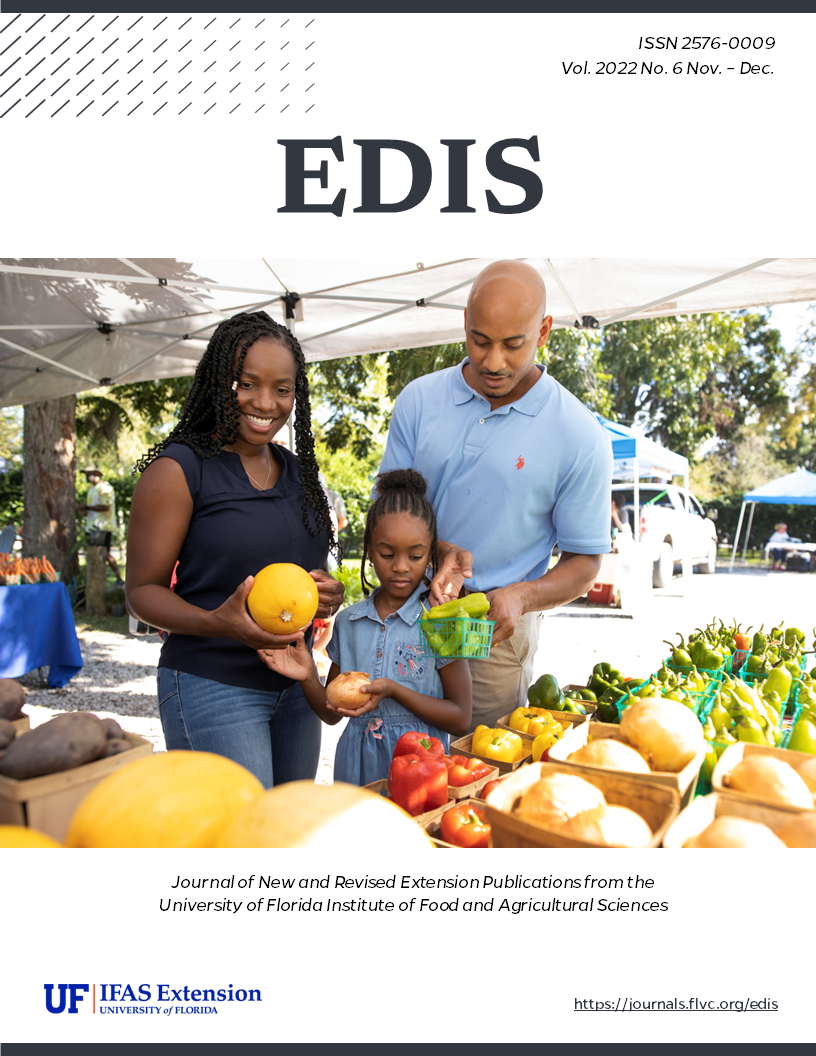Resumen
Almaco jack, Seriola rivoliana, is a perciform within the order Perciformes, family Carangidae; which includes jacks and pompanos. They are members of the genus Seriola, a species of interest for aquaculture diversification worldwide. Like other commercially farmed Seriola species, almaco jack (also known as longfin yellowtail and kampachi) are fast growers, have a high market value, and are increasingly well-regarded among chefs for their versatility in both cooked and raw preparations. These characteristics, among others, have made them favorable candidates for both land-based and offshore aquaculture.
Citas
Abdussamad, E., K. Joshi, and K. Jayabalan. 2008. “Description of Two Lesser Known Jacks of the genus, Seriola (Family: Carangidae) from Indian Waters and Their Comparison with a Closely Related Species, Seriolina nigrofasciata (Ruppell, 1829).” Journal of the Marine Biological Association of India 50 (1): 57–61.
Barreiros, J. P., T. Morato, R. S. Santos, and A. E. S. de Borba. 2003. “Interannual Changes in the Diet of the Almaco Jack Seriola rivoliana (Perciformes: Carangidae) from the Azores.” Cybium 27 (1): 37–40.
Benetti, D., D. Margulies, V. Scholey, J. Wexler, M. Stein, G. Partridge, and J. Stieglitz. 2013. “Overview on Marine Fish Aquaculture in the Americas.” High Value Aquaculture Finfish Symposium, Japan. World Aquaculture Society. https://www.was.org/_documents/kagoshima/8.%20Benetti.pdf
Blacio, E., J. Darquea, and P. Rodríguez. 2003. “Avances en el cultivo de huayaipe, Seriola rivoliana (Valenciennes 1833), en las instalaciones del CENAIM.” El Mundo Acuícola (9):27–28.
Fernández-Palacios, H., D. Schuchardt, J. Roo, C. Hernández-Cruz, and M. Izquierdo. 2015. “Spawn Quality and GnRHa Induction Efficiency in Longfin Yellowtail (Seriola rivoliana) Broodstock Kept in Captivity.” Aquaculture 435:167–172. Elsevier B.V. https://doi.org/10.1016/j.aquaculture.2014.09.021
Gilbert, C. R., and J. D. Williams. 2002. National Audubon Society Field Guide to Fishes. North America. Rev. ed., 2nd ed., fully rev. New York : Alfred A. Knopf, 2002.
Grubman, J. 2014. “Farmed Almaco Jack Seriola rivoliana.” United States Submersible Marine Net Pens. Monterey Bay Aquarium Seafood Watch. 54 pp.
Grüss, A., C. Biggs, W. D. Heyman, and B. Erisman. 2018. “Prioritizing Monitoring and Conservation Efforts for Fish Spawning Aggregations in the U.S. Gulf of Mexico.” Scientific Reports 8 (1): 1–10. https://doi.org/10.1038/s41598-018-26898-0
Laidley, C. W., R. J. Shields, and A. O. Ostrowksi. 2004. “Progress in Amberjack Culture at the Oceanic Institute in Hawaii.” Global Aquaculture Advocate 7:42–43.
Marino, G., A. Mandich, A. Massari, F. Andaloro, S. Porrello, M. G. Finoia, and F. Cevasco. 1995. “Aspects of Reproductive Biology of the Mediterranean Amberjack (Seriola dumerilii Risso) during the Spawning Period.” Journal of Applied Ichthyology. https://doi.org/10.1111/j.1439-0426.1995.tb00002.x
Patrick, G., A. M. Tarnecki, N. Rhody, R. Schloesser, K. Main, R. Yanong, and R. Francis‐Floyd. 2019. “Disinfection of Almaco Jack (Seriola rivoliana Valenciennes) Eggs: Evaluation of Three Chemicals.” Aquaculture Research 50 (12): 3793–3801. https://doi.org/10.1111/are.14342
Quiñones-Arreola, M. F., G. Fabiola Arcos-Ortega, V. Gracia-López, R. Casillas-Hernández, C. Weirich, T. Morris, M. Díaz-Tenorio, and C. Ibarra-Gámez. 2015. "Reproductive Broodstock Performance and Egg Quality of Wild-Caught and First-Generation Domesticated Seriola rivoliana Reared under Same Culture Conditions.” Latin American Journal of Aquatic Research 43:953–962. https://doi.org/10.3856/vol43-issue5-fulltext-15
Roo, J.; Schuchardt, D.; Socorro, J.; Guirao, R.; Hernández C., Fernández, H. 2009. Maduración y obtención de puestas de Seriola rivoliana en Canarias. XII Congreso Nacional de Acuicultura: Libro de Resúmenes. Madrid, España. pp 598–599.
Roo, J.; Grossi, E.; Schuchardt, D.; Socorro, J.; Hernández, C.; Izquierdo, M.; Fernández, H. 2010. “Potential of Almako Jack, Seriola rivoliana, as a Fast-Growing Species for European Aquaculture Diversification.” Universidad de Las Palmas de Gran Canaria. https://www.researchgate.net/profile/Javier_Roo/publication/267024778_POTENTIAL_OF_ALMAKO_JACK_Seriola_rivoliana_AS_A_FAST-GROWING_SPECIES_FOR_EUROPEAN_AQUACULTURE_DIVERSIFICATION/links/5441089a0cf2e6f0c0f4e37a.pdf
Roo, J., H. Fernández-Palacios, C. M. Hernández-Cruz, A. Mesa-Rodriguez, D. Schuchardt, and M. Izquierdo. 2014. “First Results of Spawning and Larval Rearing of Longfin Yellowtail Seriola rivoliana as a Fast-Growing Candidate for European Marine Finfish Aquaculture Diversification.” Aquaculture Research 45 (4): 689–700. https://doi.org/10.1111/are.12007
Roo, J., H. Fernández-Palacios, D. Schuchardt, C. M. Hernández-Cruz, and M. S. Izquierdo. 2015. "Influence of Hormonal Induction and Broodstock Feeding on Longfin Yellowtail Seriola rivoliana Maturation, Spawning Quality and Egg Biochemical Composition.” Aquaculture Nutrition 21 (5): 614–624. https://doi.org/10.1111/anu.12188
Rottman, R.W., J.V. Shireman, and F.A. Chapman. 1991. “Introduction to Hormone-Induced Spawning of Fish.” Southern Regional Aquaculture Center, Publication No. 421. 4 p.
Sicuro, B., and U. Luzzana. 2016. “The State of Seriola spp. Other Than Yellowtail (S. quinqueradiata) Farming in the World.” Reviews in Fisheries Science and Aquaculture 24:314–325. Taylor & Francis. https://doi.org/10.1080/23308249.2016.1187583
Sims, N., L. Vollbrecht, and D. Peters. 2019. “The Velella Epsilon Project: Pioneering Offshore Aquaculture in the Southeastern Gulf of Mexico.” Florida Sea Grant Pioneering Offshore Aquaculture Workshop. https://www.flseagrant.org/aquaculture/openocean/pioneering-offshore-aquaculture-workshop/
Smith-Vaniz, W. F. 2003. “Jacks and Scads (Bumpers, Pompanos, Leatherjacks, Amberjacks, Pilotfishes, Rudderfishes).” The Living Marine Resources of the Western Central Atlantic, Volume 3: Bony fishes part 2 (Opistognathidae to Molidae):1426–1468.
https://www.fishbase.de/summary/Seriola-rivoliana.html
www.bofish.com/farm/mariculture/

